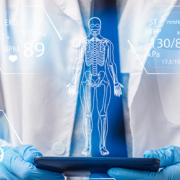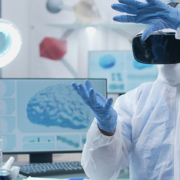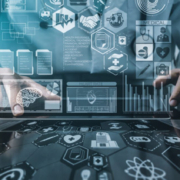NOAA is Creating a Digital Twin of the Planet Earth!
A digital twin is a digital representation of a physical object or system. Cognitive digital twin (CDT) technology uses AI to create highly sophisticated “twins” or models to accurately mimic a real-world object. That object could be a car, an airplane, ship, or helicopter. Increasingly in the healthcare field, CDT has been used to “twin” organs and biological systems for research, diagnostics, and health maintenance. Digital twins have even been built to represent and understand regions and cities.
Now, in perhaps one of the most complex and ambitious uses of CDT to date, the National Oceanographic and Atmospheric Association (NOAA) has announced its plans to create a digital twin of the planet Earth to track global warming and other environmental issues!
The agency has partnered with NVIDIA and Lockheed Martin to construct the Earth Observation Digital Twin, an inaugural prototype of Earth modeled on real-time geophysical data sourced from satellites and ground stations.
According to NOAA, the replica Earth, or EODT, will be designed as a two-dimensional computer program. Some potential climate impacts the EODT can display include global glacier melting, drought impacts, wildfire prediction, and other climate change events.
“We’re providing a one-stop shop for researchers, and for next-generation systems, not only for current, but for recent past environmental data,” Lockheed Martin Space Senior Research Scientist Lynn Montgomery said. “Our collaboration with NVIDIA will provide NOAA a timely, global visualization of their massive datasets.”
Emerging technologies like artificial intelligence play a key role in EODT’s data processing and modeling. Matt Ross, a senior manager at Lockheed Martin, said that the sheer volume and diversity of data from NOAA sources that program EODT make it challenging to gauge accurate insights from the application without the use of AI.
“This data happens to come in different formats, because the data are so diverse, because it’s measuring so much different stuff,” Ross said. “It arrives in different formats that, absent technology, it could make it very, very difficult to gain the insights that NOAA needs to make decisions.”
Leveraging the power of AI and machine learning algorithms will help NOAA researchers assimilate and identify the incoming data, as well as detect any anomalies. Ross added that the combined power of AI and ML data processing is key to Lockheed and NVIDIA’s “digital twin” programming technology in that it can accurately model past data as well as future realities, all in an intractable and real-time interface.
While both NVIDIA and Lockheed intend for the final deliverable to be a two-dimensional user experience, additional capabilities may be added in the future.
“The fact that we can pull all this data into a single sort of format, in a single viewpoint, allows you to have real-time or near real time, access to it, and the interdependencies of that data to make real-time decisions,” said Dion Harris, the lead product manager of accelerated computing at NVIDIA.
Other Industries Benefiting from Digital Twin Technologies
In addition to paving the way for a digital twin of the planet itself to monitor climate change, AI and digital twinning are revolutionizing many other industries, chief among them transportation. Just as CDT can monitor the health of the Earth, cognitive digital twin technologies are proving invaluable for predictive maintenance of high-value military vehicles, airplanes, ships, and even passenger cars. Digital twin solutions like those developed by CarTwin extend the lifespan of cars and other vehicles by monitoring the vehicle’s “health” through its “digital twin.”
Basically, CarTwin can provide diagnostic and predictive models for all vehicle systems for which data is available (either directly or indirectly) onboard the vehicle.
Virtually any part of the vehicle that has sensors or that sensors can be developed for can be “twinned.” These data sets are then enhanced and augmented with design and manufacturing data that is already available by the OEM.
Primarily designed for use in fleets of vehicles, in combination with powerful AI models, CarTwin predicts breakdowns, monitors and improves performance, measures and records real-time greenhouse gas emissions, which reduces expensive maintenance costs and avoids lost revenue associated with fleet downtime.
Rohit Mahajan is a Managing Partner at BigRio and the President and Co-Founder of Citadel Discovery. He has a particular expertise in the development and design of innovative AI and machine learning solutions for clients in Healthcare, Financial Services, Retail, Automotive, Manufacturing, and other industry segments.
CarTwin has leveraged AI and Digital Twin technologies to create a digital, cloud-based clone of a physical vehicle designed to detect, prevent, predict, and optimize through AI and real-time analytics. If you would like to benefit from our expertise in these areas or if you have further questions on the content of this article, please do not hesitate to contact us.









